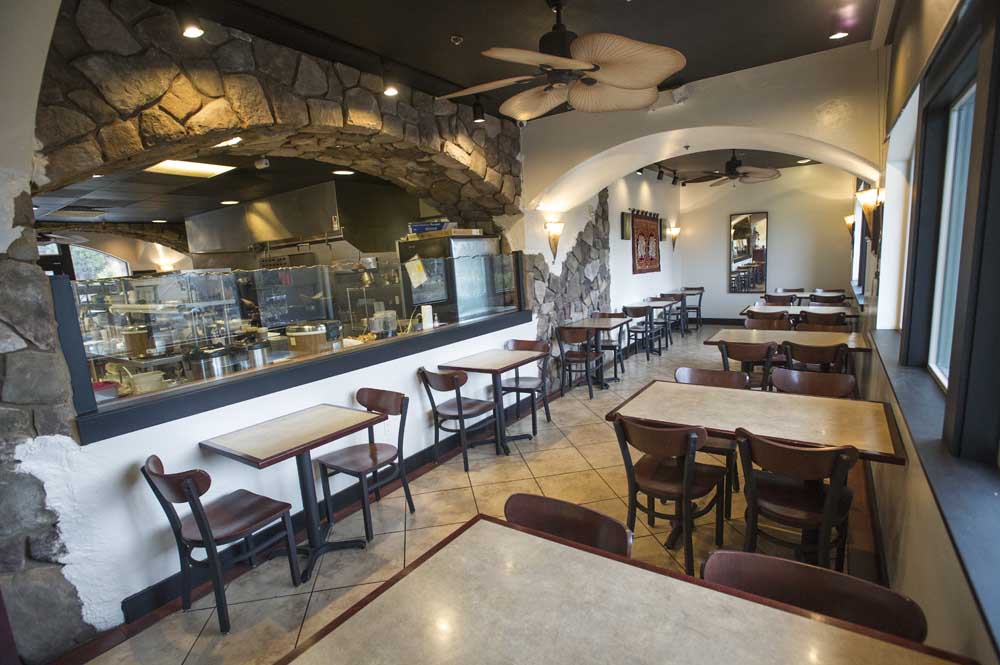Restaurant review: Nam Tok Kitchen
Published 12:00 am Thursday, February 8, 2018

- The dining area of Nom Tok Kitchen, located at 745 NW Washington Drive, in Bend. (Ryan Brennecke/Bulletin photo)
Regional variations are common in national diets. Chinese and Indian cuisines, to name but two, have a distinct range of styles. The same is true in Italy, Spain, France and even the United States.
So it should come as no surprise that Thai cuisine also has distinctions. The everyday food enjoyed in Bangkok is often unlike that of Chiang Mai, to the far north, or the Mekong River environs of Laos, to the northeast.
Trending
Bend is fortunate to have all three of these variations at local restaurants. Bangkok-style cooking is the best known, but Wild Rose has been serving northern Thai cuisine since the fall of 2013. Now, Nam Tok Kitchen offers the northeastern Thai variation.
“Nam tok” is Thai for “waterfall,” a suitable moniker for what is probably Bend’s nearest restaurant to spectacular Tumalo Falls. It is owned by Pah Lee Bretoi, who bought the former Thai Thai in June but didn’t change the name until December.
Bretoi (who goes by the name “Lee”) was born in Laos, across the Mekong from Chiang Khan, Thailand. She was raised in refugee camps until her father settled the family in Texas and opened an Asian grocery.
At Nam Tok, she runs what is largely a one-woman show, prepping, cooking and cleaning, assisted by a couple of servers and by her school-age sons (Orion, 14, and Osiris, 11) on weekends.
Intriguing dishes
Lao and Isahn (northeastern) Thai flavors are more pungent than those of the south. “They are less sweet,” Lee said.
Trending
“We use a lot of shrimp paste and fish sauce, and not as much coconut milk in our curries. We also ferment our vegetables.”
One of the more intriguing dishes on the menu is a combination plate with Sai Oua (Lao sausage) and Savan beef (a traditional jerky). These are made in Beaverton by Lee’s cousin, at a Lao food cart in which Lee (a Bend resident since 2010) is a partner.
The sausage is a blend of pork, kaffir lime, lemongrass and spices. The beef is glazed with soy sauce, cane sugar and sesame seeds. Both are served with dipping sauces. My dining companion termed the savory meats “unusual but tasty.”
Other dishes we sampled were similarly hearty but a little bit more like mainstream Thai.
Grapow Gai Sap was mildly spicy. Minced chicken, stir-fried with garlic, basil, onion and bell pepper, was topped with a fried egg and served with steamed rice. I would have enjoyed some cabbage or lettuce leaves to wrap the meat blend.
Laap Nam Tok was served as a large iceberg-lettuce salad with red and green onions, cucumbers and tomato wedges. Unique touches were stems of cilantro and huge mint leaves, and slices of tender, char-grilled skirt steak. A spicy oil-and-rice-vinegar dressing accented the salad.
Kaeng Kiew Wan was a green chicken curry with coconut milk. (It could also be made with tofu.) Other ingredients were eggplant, green beans, basil, kaffir lime and bamboo shoots.
Pad Thai, the most popular Thai dish in America, is made in traditional fashion with egg noodles and bean sprouts. Scallions, peanuts, cilantro and lime, with a choice of tofu or chicken, finish the dish.
Future menu
Lee — who once owned a sushi bar in Kansas City, and who has been a resident of Bend for seven years — said she plans to begin introducing more Lao-influenced dishes with upcoming menu changes.
Among them will be a wider range of house-made curries, changing by season as ingredients are available. She plans to include green papaya salad (Som Tum) in Lao style, with crab and shrimp paste. She may also add more soups; for now, only Tom Kha Gai (a creamy chicken broth) is served.
“I make everything from scratch,” Lee said. “I also have a vegan version of everything.”
She added: “I won’t make a dish I’m not used to making.” Curries as Panang and Massaman, more common to southern Thailand, will never be on the menu. Other plates may be represented on the specials list, which changes every two weeks.
Timing and delivery of dishes needs some work. On at least one occasion, my companion and I were served our entrees several minutes apart, and our intended shared starter (Tua Din, a saucer of fried peanuts with chili and garlic) arrived after the rest of the food.
Otherwise, service was outstanding. One particular server, a friendly young man, was especially well-versed in the menu selections, and was able to offer excellent recommendations.
A little more attention to detail in atmosphere could improve the mood. A large open kitchen separates two long, narrow seating areas, but there are precious few elements of Thai or Laotian decoration.
— John Gottberg Anderson can be reached at janderson@bendbulletin.com.








